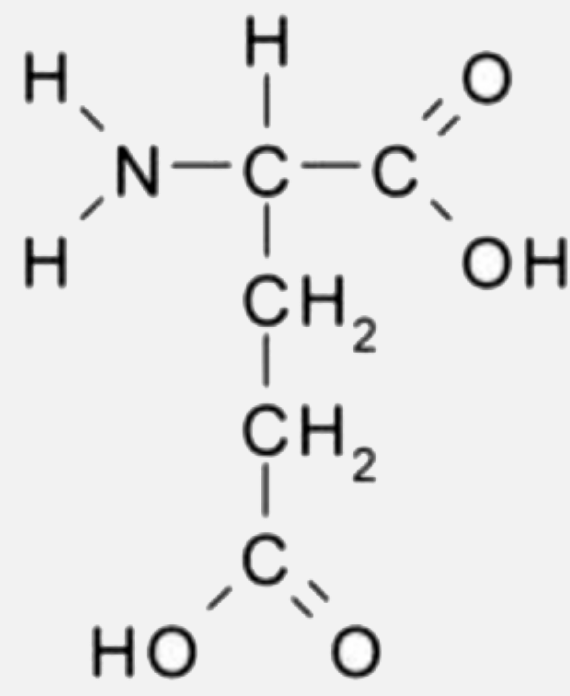Dipolar ion structure for amino acid is
H2N−CH∣R−COOH
H2N−CH∣R−COO+
H+3N−CH∣R−COO−
None of these
The correct Answer is:C
To determine the dipolar ion structure (zwitterion) for an amino acid, we need to understand the structure of amino acids and how they behave in solution. Here’s a step-by-step explanation:
1. Identify the Structure of an Amino Acid:
- An amino acid consists of a central carbon atom (C) bonded to an amino group (-NH2), a carboxyl group (-COOH), a hydrogen atom (H), and a variable R group (side chain).
2. Understand the Concept of Zwitterion:
- A zwitterion is a molecule that has both positive and negative charges but is overall electrically neutral. In the case of amino acids, this occurs when the amino group is protonated (gains a hydrogen ion) and the carboxyl group is deprotonated (loses a hydrogen ion).
3. Protonation and Deprotonation:
- In an aqueous solution, the amino group (-NH2) can accept a proton (H+) to become -NH3+ (positively charged).
- The carboxyl group (-COOH) can lose a proton (H+) to become -COO- (negatively charged).
4. Formation of the Zwitterion:
- When the amino acid is in solution, it exists predominantly as a zwitterion:
- The amino group is positively charged (-NH3+).
- The carboxyl group is negatively charged (-COO-).
- The overall structure can be represented as:
R∣∣H2N⁺−C−COO⁻∣∣H
5. Charge Distribution:
- The positive charge on the amino group and the negative charge on the carboxyl group balance each other, making the molecule neutral overall, which is characteristic of zwitterions.
6. Conclusion:
- The dipolar ion structure of an amino acid in solution is thus a zwitterion, where the amino group is positively charged and the carboxyl group is negatively charged.
- An amino acid consists of a central carbon atom (C) bonded to an amino group (-NH2), a carboxyl group (-COOH), a hydrogen atom (H), and a variable R group (side chain).
- A zwitterion is a molecule that has both positive and negative charges but is overall electrically neutral. In the case of amino acids, this occurs when the amino group is protonated (gains a hydrogen ion) and the carboxyl group is deprotonated (loses a hydrogen ion).
- In an aqueous solution, the amino group (-NH2) can accept a proton (H+) to become -NH3+ (positively charged).
- The carboxyl group (-COOH) can lose a proton (H+) to become -COO- (negatively charged).
- When the amino acid is in solution, it exists predominantly as a zwitterion:
- The amino group is positively charged (-NH3+).
- The carboxyl group is negatively charged (-COO-).
- The overall structure can be represented as:
R∣∣H2N⁺−C−COO⁻∣∣H
- The positive charge on the amino group and the negative charge on the carboxyl group balance each other, making the molecule neutral overall, which is characteristic of zwitterions.
- The dipolar ion structure of an amino acid in solution is thus a zwitterion, where the amino group is positively charged and the carboxyl group is negatively charged.
Topper's Solved these Questions
- CARBOXYLIC ACIDBOOK - MOTIONCHAPTER - CARBOXYLIC ACIDEXERCISE - Exercise - 3
16 Videos
- CARBOXYLIC ACIDBOOK - MOTIONCHAPTER - CARBOXYLIC ACIDEXERCISE - Exercise - 4 (LEVEL - 1 )
15 Videos
- CARBOXYLIC ACIDBOOK - MOTIONCHAPTER - CARBOXYLIC ACIDEXERCISE - Exercise - 2(LEVEL - 1)
26 Videos
- CARBONL COMPOUNDSBOOK - MOTIONCHAPTER - CARBONL COMPOUNDSEXERCISE - EXERCISE - 4 LEVEL -II
24 Videos
- CHEMICAL BONDING BOOK - MOTIONCHAPTER - CHEMICAL BONDING EXERCISE - EXERCISE -4 LEVEL-II
40 Videos
Similar Questions
Knowledge Check
The structural formula of an amino acid, isoleucine is
ACH3−NH2∣CH.COOHB C
C D
D
Which one of the following is the general structural formula of an amino acid ?
ARCH2CONH2BRCH(NH2)OHCRCH2NH2DRCH(COOH)NH2An acidic amino acid is
ALysineBGlutamateCAspartateDBoth B and C
Draw the structure of the amino acid alanine .
View SolutionDraw the structure of the amino acid, alanine.
View SolutionUnder which of the following category, the given structure of amino acid can be classified?

View SolutionIn the primary structure of a protein , amino acids are linked due to the presence of
View SolutionThe acidic amino acids is :
View Solution
